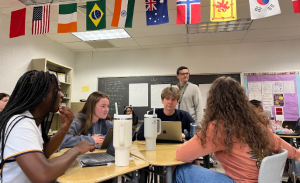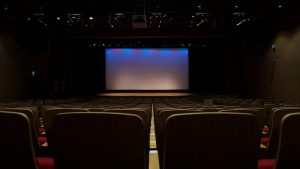Propaganda promotes prejudice

December 12, 2018
Propaganda posters used techniques to persuade United States’ citizens to ration materials, buy war bonds, and have victory gardens during the second world war. They accomplished this by pulling at heartstrings, using feelings of patriotism, and utilizing demonization to portray dictators, and to strike fear. During World War II, propaganda posters became a vital detail in American culture to encourage civilians to promote the war.
In 1942 the Office of War Information formed to both craft and disseminate the government’s message. The U.S. Government recruited artists, filmmakers, and intellectuals to take their agenda and turn it into a propaganda campaign. Posters across America, from railway stations, to post offices, schools, and apartment buildings. Their abundance grew as the war continued to occur.
In general, propaganda used these multiple techniques to persuade individuals across demographics. Demonization portrays an individual as a literal demon, or a figure like so. This technique found its way to WWII propaganda by portraying Japanese Americans as rats with dramatic facial features that emphasized their stereotypical qualities.
When the viewers emotions experience exposure to this form of discrimination, their own opinions begin to agree with the piece. Encouragement of patriotism within the American community to support the United States during war time, and it’d seem “un-American” to go against the majority.
Political artists use name calling, racial slurs, and derogatory terms to diminish people within propaganda. The appeal to fear considers the reader’s hesitance to oppose one social group against another, relating to the “peer pressure patriotism” stated. With a catchy slogan the artist utilizes words and phrases to create a prejudice in the mind of the viewer. These slogans are easy to remember and have underlying messages. A bandwagon technique demonstrates a message which embodies an, “Everyone else is doing it!” behavior, using the majority over the minority.
A prominent example of the fear appeal in American WWII propaganda deems a poster of Adolf Hitler’s transparent figure sitting besides an American man. That agitprop had the caption, “When you ride ALONE you ride with Hitler! Join a Car-Sharing Club TODAY!”. This poster referred to an idea of carpooling, for conservation of gasoline for war uses instead of average civilians exploiting it.
Another propaganda poster demonstrates a patriotic, masculine, and angered American soldier questioning, “Have you really tried to save gas by getting into a car club?” This piece proposes how the government pushed for gasoline rationing. Gasoline rationing temporarily curtailed car driving and suspended car culture. The government and private industry were encouraging Americans to limit their driving. Advertisements and government propaganda conflated car ownership with citizenship and portrayed driving as integral to the American way of life.
But this mode of citizenship was unavailable to all: posters, pamphlets, and advertisements portrayed the American driver exclusively as white males. Such depictions implied that the mobility and independence that driving afforded were the sole domain of white American men.
Rationing refers to restrictions placed by the government on supply or demand of select goods, food and raw materials. It most commonly occurs during times of scarcity or of artificial scarcity to maintain prices low and supplies last. Rationing occurred after Pearl Harbor in January of 1942.
An additional proposal publicized by propaganda during world war 2, included growing victory gardens. The government encouraged people to plant fruits and vegetables on any square patch of land available. These became known as Victory Gardens. In 1944, women and their families planted seven million acres that yielded eight million tons of vegetables. (Women World War II) These Victory gardens diminished the amount of food purchased in stores, which instead exported to Europe. This process encouraged self sufficiency within citizens to benefit the state at war.
To conclude, American World War II propaganda was effective in persuading citizens to promote the agenda of the government. They were effective by techniques that preyed on the viewer’s emotions, patriotism, fears, personal beliefs, and widespread beliefs of the nation. Rationing supplies, such as vegetables, fruits, oil, and gasoline, in the typical American household. This process induced civilians to grow victory gardens which grew many of their vital foods.
These important acts followed the government’s agenda to limit resources at home, therefore, soldiers and allies struggling in European nations would receive necessary goods and resources. The lasting impact from the immense amount of propaganda used within this time period has affected multiple civilian lives, and could still affect them today.










